NRAO Newsletter
Volume Vol#, Issue Iss#
Day# Month# Year#
NRAO Newsletter
Volume Vol#, Issue Iss# • Day# Month# Year#
 The Atacama Large Millimeter/submillimeter Array (ALMA) in Chile. This world class telescope facility recently celebrated 10 years of science operations. Photo by Pablo Carrillo.
The Atacama Large Millimeter/submillimeter Array (ALMA) in Chile. This world class telescope facility recently celebrated 10 years of science operations. Photo by Pablo Carrillo.
Upcoming Events

NRAO at the New Orleans AAS
January 7 - 11, 2024 | New Orleans, LA

NRAO at AAAS - Astronomical Radar: Exploring the Solar System and Defending Planet Earth
February 15 - 17, 2024 | Denver, CO

International Symposium on Space Terahertz Technology (ISSTT)
April 7 - 11, 2024 | Charlottesville, VA

20th Synthesis Imaging Workshop
May 15 - 22, 2024 | Socorro, NM
NRAO at AAS 243 in New Orleans
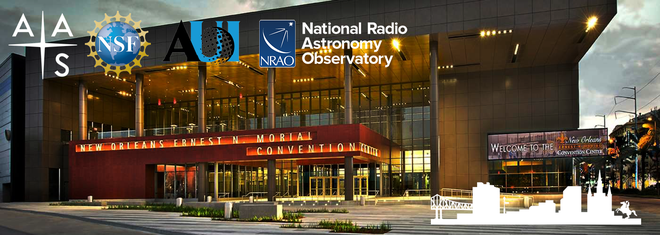
Answer our survey - what are your plans for the New Orleans AAS Conference next month?
The National Radio Astronomy Observatory and Green Bank Observatory will be bringing the best in radio astronomy to the city of New Orleans, Louisiana at the 243rd Meeting of the American Astronomical Society. In addition to the NRAO displays within the exhibit hall, the following sessions from NRAO will be showcased at the conference.
Please refer to our table of events and the AAS Block Schedule for abstracts, times, and locations of events (locations are subject to change).
| Session | Date | Time | Location |
|---|---|---|---|
| REU Grad Student Event: Opportunities with the NRAO | Sunday, January 7 | 5:30pm to 7:00pm CT | Great Hall B |
| Exhibit Hall Opening Reception | Sunday, January 7 | 7:00pm to 8:30pm CT | Hall B-1/B-2 |
| Special Session: ODI - Drop the mask: Navigating Imposter Phenomenon as a BIPOC individual in STEM | Monday, January 8 | 10:00am to 11:30am CT | 209 |
| Special Session: ALMA as a high-z powerhouse - the impact of the Wideband Sensitivity Upgrade | Monday, January 8 | 10:00am to 11:30am CT | 222 |
| NRAO Town Hall Reception | Monday, January 8 | 6:30pm to 8:30pm CT | R08 / R09 |
| iPoster Session: ngVLA - Space Weather on Other Worlds | Tuesday, January 9 | 9:00am to 10:00am CT | Exhibit Hall |
| Special Session: ngVLA - Space Weather on Other Worlds | Tuesday, January 9 | 10:00am to 11:30am CT | 220 |
| NSF Town Hall | Tuesday, January 9 | 12:45pm to 1:45 pm CT | Great Hall A |
| Special Session: GBO - Science from GBT Large Surveys of the ISM and Star Formation | Tuesday, January 9 | 2:00pm to 3:30pm CT | 210 |
| Exhibitor Theater: The ALMA Wideband Sensitivity Upgrade |
Wednesday, January 10 |
9:30am to 10:00am CT | Exhibitor Theater |
| NAASC Polarization Clinic |
Wednesday, January 10 |
5:30pm to 6:30pm CT | NRAO Exhibit |
ALMA Program News
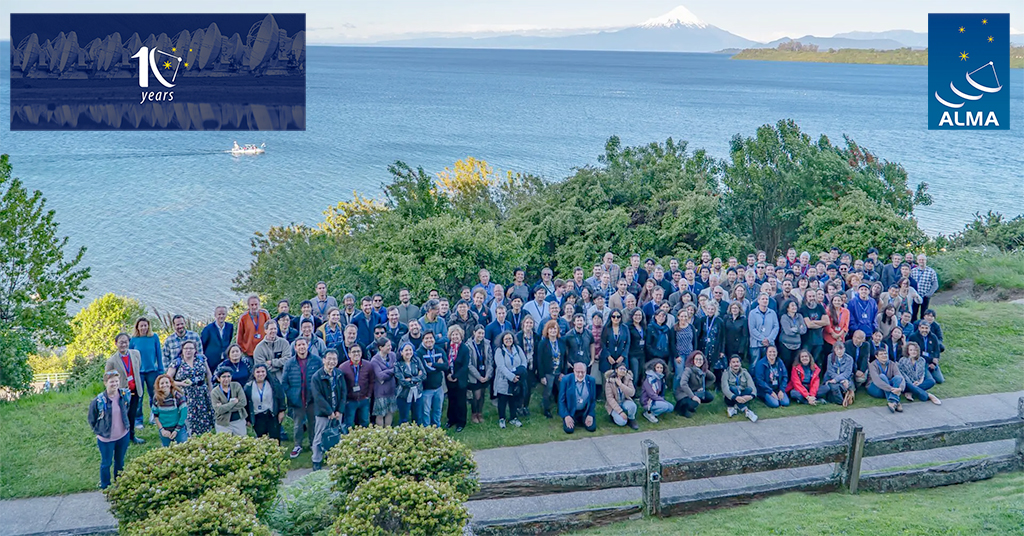
ALMA Celebrates 10 Years of Science Operations
To commemorate its first decade of science operations, the ALMA partnership organized a conference that celebrated the observatory accomplishments, its latest results, and discussed future technical developments. There were ~180 in-person participants and another ~160 online. Abstracts and other materials are available on the conference website.
The first decade of ALMA has led to many exciting discoveries, and has resulted in over 3500 publications and counting. As ALMA starts on its second decade of operations, it is implementing an ambitious development roadmap that will ultimately quadruple the system bandwidth and vastly improve ALMA's observing efficiency for both continuum and spectral line science.
ALMA Observing Status
Following the successful repairs of ALMA transporter Otto, antenna relocations started on November 25, completing Configuration 6 on November 25 and reaching Configuration 6 on December 04. In order to catch up with the original configuration calendar announced at the start of Cycle 10, almost continuous antenna relocations are envisaged up until December 28th. As a consequence, the first visits to Configurations 6, 5, 4 and 3 will be shorter than originally planned. However these configurations will be revisited later in the cycle.
The Cycle 10 configuration calendar has been updated on the science portal. As usual, this calendar is meant as a reference and remains subject to change.
ALMA Primer Video Series
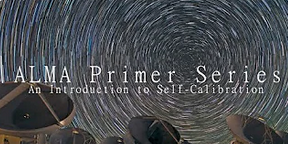
The ALMA Primer Instructional Video series, which can be found on the Science Portal, is designed to provide a basic introduction to radio interferometry, calibration, imaging, and other topics in short (5-10 minute), easy-to-digest segments. As a work in progress, new videos are released periodically. A new video, An Introduction to Self-Calibration, has just been released. In this ~8 minute video, we look at Self-Calibration, how it works, and how and when to use this powerful technique that can significantly improve the dynamic range of your images.
Other videos in the series include an Introduction to Radio Interferometry, Calibration, CLEAN, and much more. Subscribe to the ALMA Primer Video Series YouTube channel to be alerted to new videos as they are released.
Observatory Priorities during WSU Implementation
The ALMA Director, Sean Dougherty, would like to share the following statement on observatory priorities during implementation of the Wideband Sensitivity Upgrade (WSU).
The ALMA Observatory is committed to remaining on the cutting edge of delivering transformational submillimeter science for decades to come. The WSU is an ambitious upgrade to increase ALMA’s instantaneous bandwidth by up to a factor of 4, and with improved sensitivity. This upgrade will benefit all ALMA users and open new discovery space, as described in the ALMA WSU Science Case. This is a major change to ALMA; essentially it will deliver a brand-new telescope for the next decade.
The WSU upgrade is well underway, with the first wideband receiver, Band 2, in production and upgraded Band 6 and Band 8 receivers in development. In addition, a new correlator is under design, along with a new data transmission system and digitizers. The goal is to offer first science with the WSU by the end of the decade.
The WSU requires significant staff effort for delivery on this timescale. This has required re-prioritization of operational activities. This includes new observing capabilities being frozen over upcoming ALMA Cycles, except for prior development commitments such as Band 1 completion. Be assured the WSU is being implemented in a way that sustains ALMA scientific operations, but impacts on observing and operations can be expected.
The WSU is an exciting project that guarantees the future of the observatory and keeps ALMA at the forefront of astronomical research. I will keep you informed of project status and any impact on operations as the WSU progresses.
AAS Special Session: ALMA as a high-z powerhouse - the impact of the Wideband Sensitivity Upgrade
The NAASC will host a special session at the upcoming Winter AAS Meeting in New Orleans, held on Monday, January 8, 2024, 10am to 11:30am (Central Time). This special session will present high-profile results obtained through ALMA programs in different areas of high-z studies - including large programs, current and expected synergies with high-sensitivity facilities, and the expected yield from ALMA observations after different phases of the Wideband Sensitivity Upgrade (WSU) are achieved. The session will include four invited talks by J. Yang (U. Arizona), A. Long (UT Austin), J. Spilker (Texas A&M) and D. Burgarella (LAM Marseille), and a general presentation about the WSU.
More information can be found on the NAASC science website.
Support for Conferences and Workshops
The North American ALMA Science Center (NAASC) invites members of the North American (US and Canada) scientific community to apply for funding in support of inclusive conferences and workshops in fiscal year 2024. We prioritize events which encourage the participation of students, postdocs, and early career researchers. PI-led events based in the US or other national or international conferences may be considered. We will accept applications for funding below $10K at any time while funds for fiscal year 2024 last. More information can be found on the conferences and workshops section of the science website.
ngVLA Project News
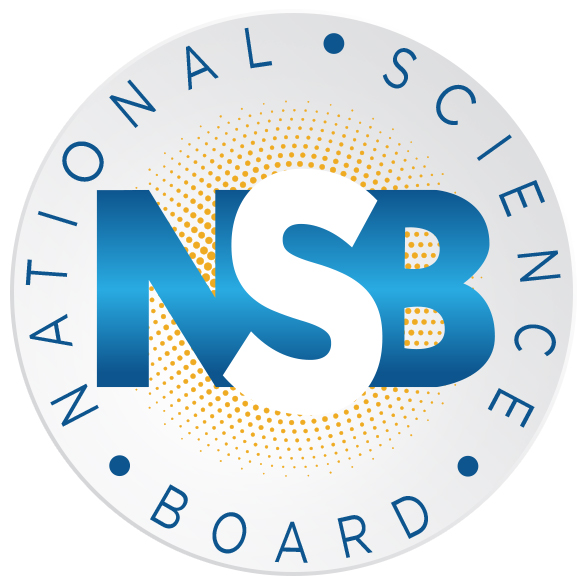
Looking Back and Looking Forward
In 2023, the ngVLA project reached many important milestones. Community successes included domestic and international science conferences. An industry highlight was the unveiling of portions of the 18m prototype antenna by Germany's mtex antenna technology. At the U.S. National Science Foundation (NSF), the ngVLA project entered into the design process for Major Research Equipment and Facilities Construction. The NSF's National Science Board was also briefed on the ngVLA.
2024 promises to be as productive for the ngVLA project. Focus areas will include preparing for the prototype antenna's arrival on the Plains of San Agustin, continuing system design work, supporting science conferences, and engaging international and interagency communities to solidify partnerships.
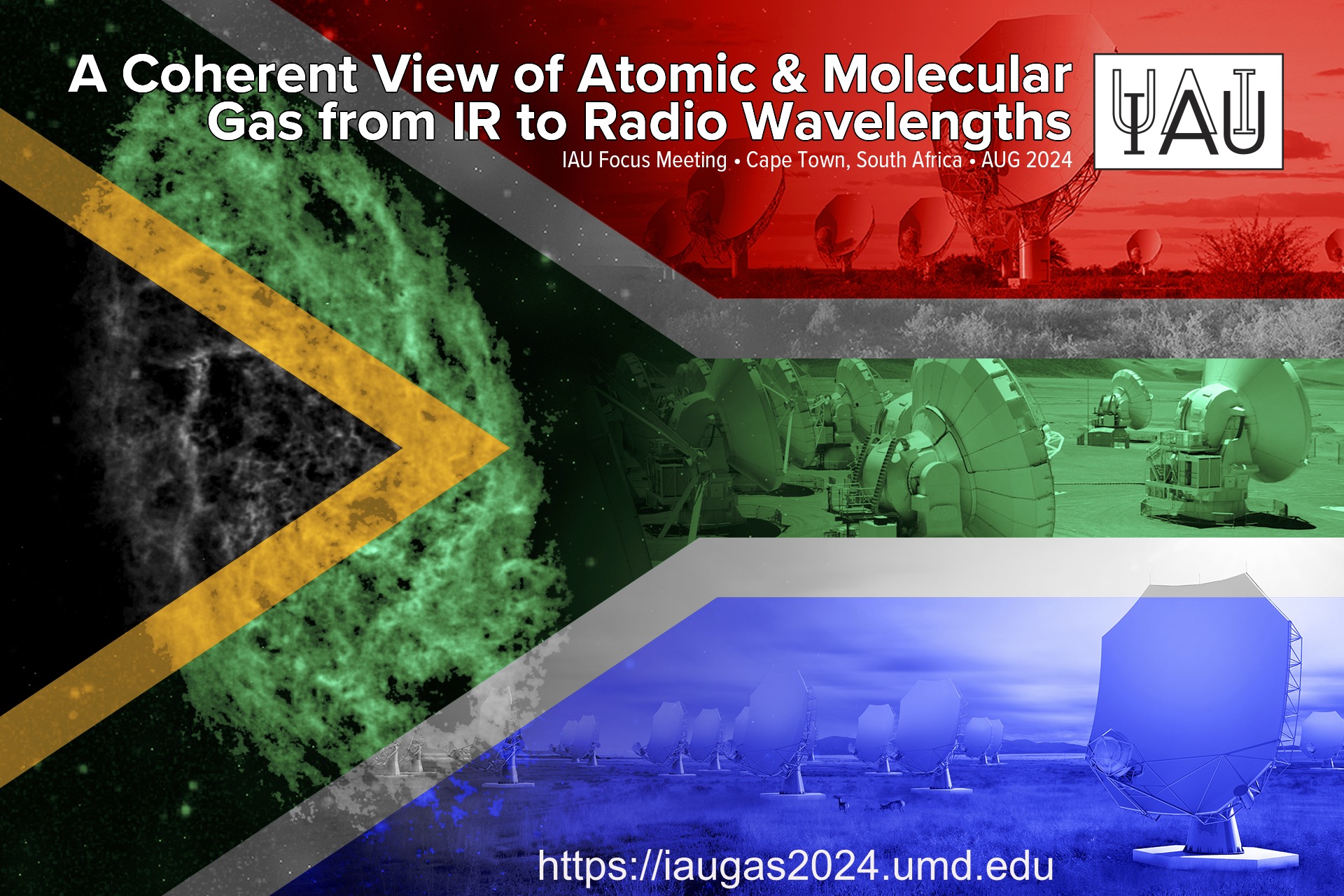
Jeff Hellerman (NRAO/AUI/NSF)
A Coherent View of Atomic and Molecular Gas from Infrared to Radio Wavelengths
This meeting will be held in August 2024 in Cape Town, South Africa, at the XXXII International Astronomical Union General Assembly. The Focus Meeting will explore how the work taking place at existing facilities is shaping our understanding of the interstellar medium structure and feedback in our own Milky Way and external galaxies, and how this work is re-framing the science that will be addressed by the remarkable capabilities of future radio observatories. Key Focus Meeting organizers are Alberto Bollato (U Maryland), Nami Sakai (RIKEN) and Eva Schinnerer (MPIA). Registration for the Focus Meeting is open.
ngVLA Science - Molecular Gas at the Core of Ionized Jets
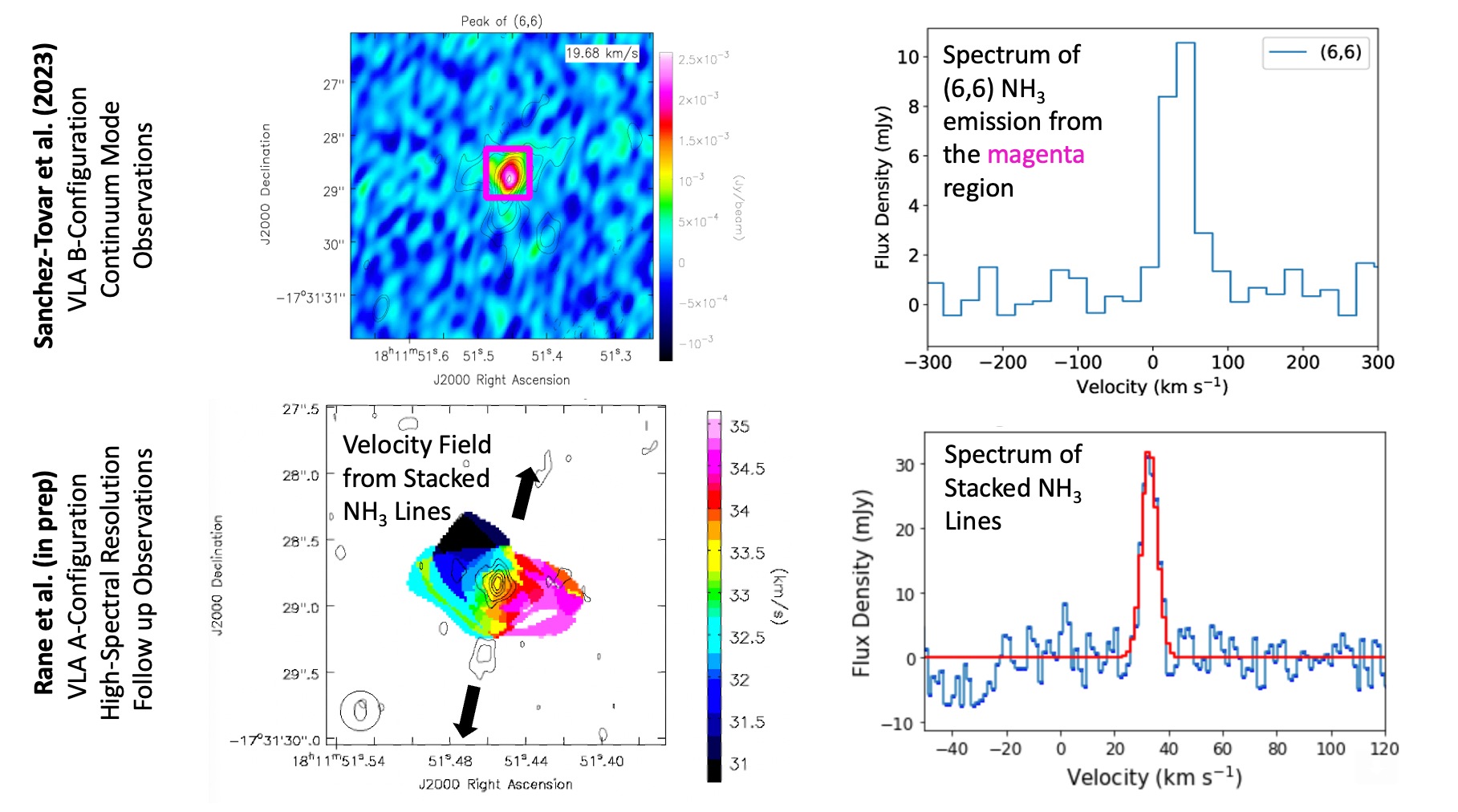
[click to enlarge]
An ionized jet's ammonia, discovered in Jansky VLA continuum-mode data at low spectral resolution (top row) and followed up at high spectral resolution (bottom row). Credit: Rane et al. 2024.
Research needing complementary continuum and spectral line data at cm wavelengths usually requires different observing runs or spectral configurations. However, in Sanchez-Tovar et al. (2023) we explored a commensal approach: detectability of spectral lines hidden in continuum-mode data. Current Jansky VLA continuum data cover a broad range of frequencies with multiple spectral windows, each with somewhere between 64 and 128 channels that can be used for line searches at low spectral resolution.
We implemented this approach using the sensitive continuum survey for ionized jets toward high-mass stellar objects by Rosero et al. (2016, 2019). Indeed, we detected multiple methanol and ammonia transitions in the low-resolution spectral data. The line emission was mostly found toward ionized jets and jet candidates, but the lines were weak and detected only in one or two channels.
For three sources, we conducted follow up observations with the Jansky VLA at high spectral resolution. Our upcoming iPoster (Rane et al. 2024) will discuss these results. The figure shows a sneak peek for one source, IRAS 18089-1732A.
The upper panels, from the continuum-mode data, show continuum contours, (6,6) ammonia emission, and the ammonia spectrum at low spectral resolution. The lower panels, from the follow-up data, confirm the ammonia detections and reveal a velocity gradient across the ionized jet source, possibly tracing a disk/torus structure associated with the spiral-like magnetized filaments reported by Sanhueza et al. (2021). We are investigating whether a secondary velocity gradient, perpendicular to the disk, is present. That could reveal evidence for dissipation of angular momentum in the form of a disk wind and/or outflow entrainment.
The ngVLA will take this type of research to the next level, simultaneously delivering high image fidelity, spectral resolution, and continuum sensitivity to a new world of commensal projects at cm wavelengths.
Since 2015 the acronym ngVLA has appeared in 1050+ publications indexed in the SAO/NASA Astrophysics Data System. This article continues a regular feature intended to showcase some of those publications. We are especially interested in showcasing work done by early-career researchers. The collection of showcase articles can be viewed online. Anyone wishing to volunteer to author a feature should contact Joan Wrobel.
20th Synthesis Imaging Workshop: Save the date!
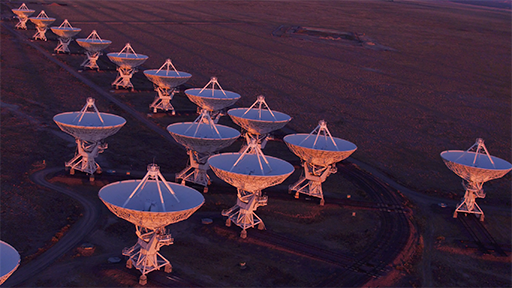
We are pleased to announce that the 20th Synthesis Imaging Workshop will be back in Socorro, NM, and will be held on May 15-22, 2024 at the New Mexico Tech campus. The registration is expected to open in mid-late January 2024.
Please save the date, and bookmark the workshop website where important information will be provided.
The workshop will consist of a week of lectures on aperture synthesis theory and techniques at a level appropriate for graduate students in astrophysics. As always the program will include discussion groups, and tutorials demonstrating data collection, calibration, and imaging radio interferometric observations especially focusing on the Very Large Array (VLA), Very Long Baseline Array (VLBA), Atacama Large Millimeter/submillimeter Array (ALMA), and Long Wavelength Array (LWA).
Semester 2024A Proposal Review
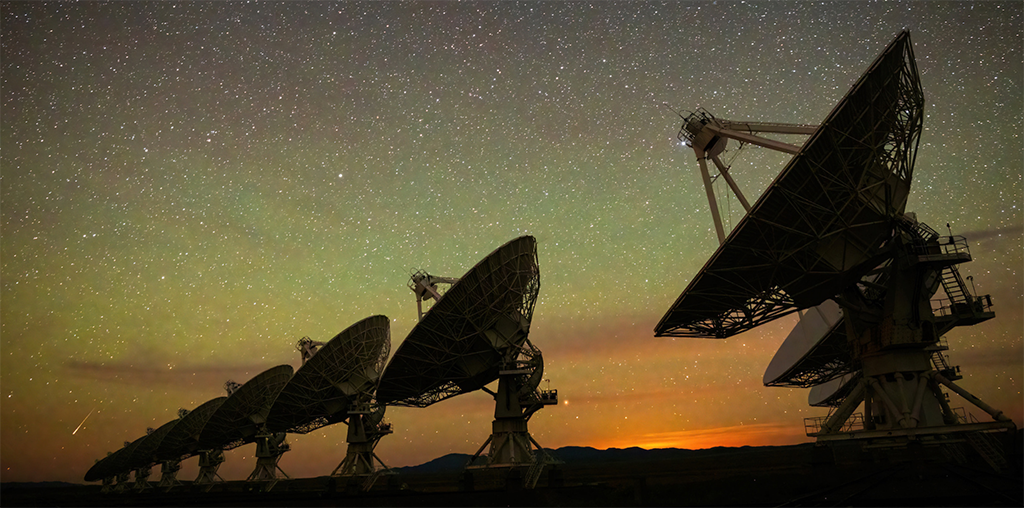
Photo by Bettymaya Foott (NRAO/AUI/NSF).
The NRAO has completed the Semester 2024A proposal review and time allocation process for the Very Large Array (VLA) and the Very Long Baseline Array (VLBA).
For the VLA the C and B-configurations will be available in the 24A semester and 211 new proposals were received by the 2 August 2023 submission deadline, including five large and twenty-eight time critical (triggered) proposals. The oversubscription rate (by proposal number) was 2.2 and the proposal pressure (hours requested over hours available) was 1.9, both of which are similar to recent semesters.
For the VLBA 62 new proposals were submitted. The oversubscription rate was 2.1 and the proposal pressure was 2.3, similar to past semesters.
Proposals submitted to the GBO were assessed through the same process. Fifty-three proposals for the GBT were received for the 24A Semester. The oversubscription rate is 1.8 and the proposal pressure is 1.2. For information on proposals for GBT observations see the GBO website.
There were twenty-four joint proposals submitted that requested time with our partner observatories: ALMA, HST, Swift, Chandra, and NICER.
The proposals were reviewed for scientific merit by ten Science Review Panels (SRPs) and for technical feasibility by NRAO staff. These reviews were completed in August - September 2023 and then considered by the Time Allocation Committee (TAC) during a face-to-face meeting on 16-17 October 2023. The TAC - comprising the 10 SRP chairs - was charged with recommending a science program for Semester 2024A to the Observatory Director. The recommended program was reviewed and approved on 2 November 2023.
A disposition letter was sent to the Principal Investigator and Co-Investigators of each proposal on 7 November 2023 and a TAC report containing information for proposers and observers, including statistics and telescope pressure plots, was released the same day. The approved science program for the VLA and the VLBA has been posted to the NRAO science website. The authors, title, abstract, and scheduled hours for each approved proposal can be accessed from the Proposal Finder Tool.
The Student Observing Support program continues to be available for NRAO observing programs and we encourage Principal Investigators of highly ranked VLA and VLBA proposals to consider applying for support.
The NRAO welcomes community feedback on the proposal review and time allocation process. Please provide such feedback via the Proposal Review department of the NRAO Helpdesk.
RFI Journal Club
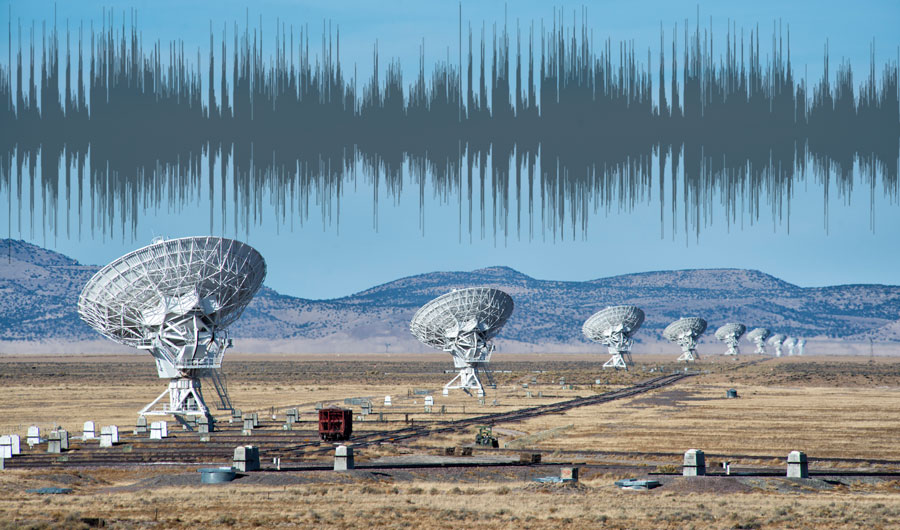
Radio Frequency Interference (RFI) is presenting a growing number of challenges to radio astronomy across the spectrum. The NRAO RFI Journal Club is a new meeting open to all members of the NRAO community and will meet monthly via Zoom to discuss current and historic articles related to RFI and its impacts on radio astronomy.
Our kickoff event on December 12, 2023 at 3 PM was led by Evan Smith (GBO). The article discussed is entitled "Simulating Spectral Kurtosis Mitigation Against Realistic RFI Signals". Like any Journal Club, these meetings will be most productive if you can read the article beforehand, but the monthly leader will review the highlights of the article in the first 20 minutes. The final 20 minutes are reserved for discussion.
The current organizers of the Journal Club are Bang Nhan, Brenne Gregory and Chris De Pree. We hope to see involvement and participation across sites and roles within the observatory. Email Chris De Pree to receive connection information.
VLA Sky Survey - Top Cited Research
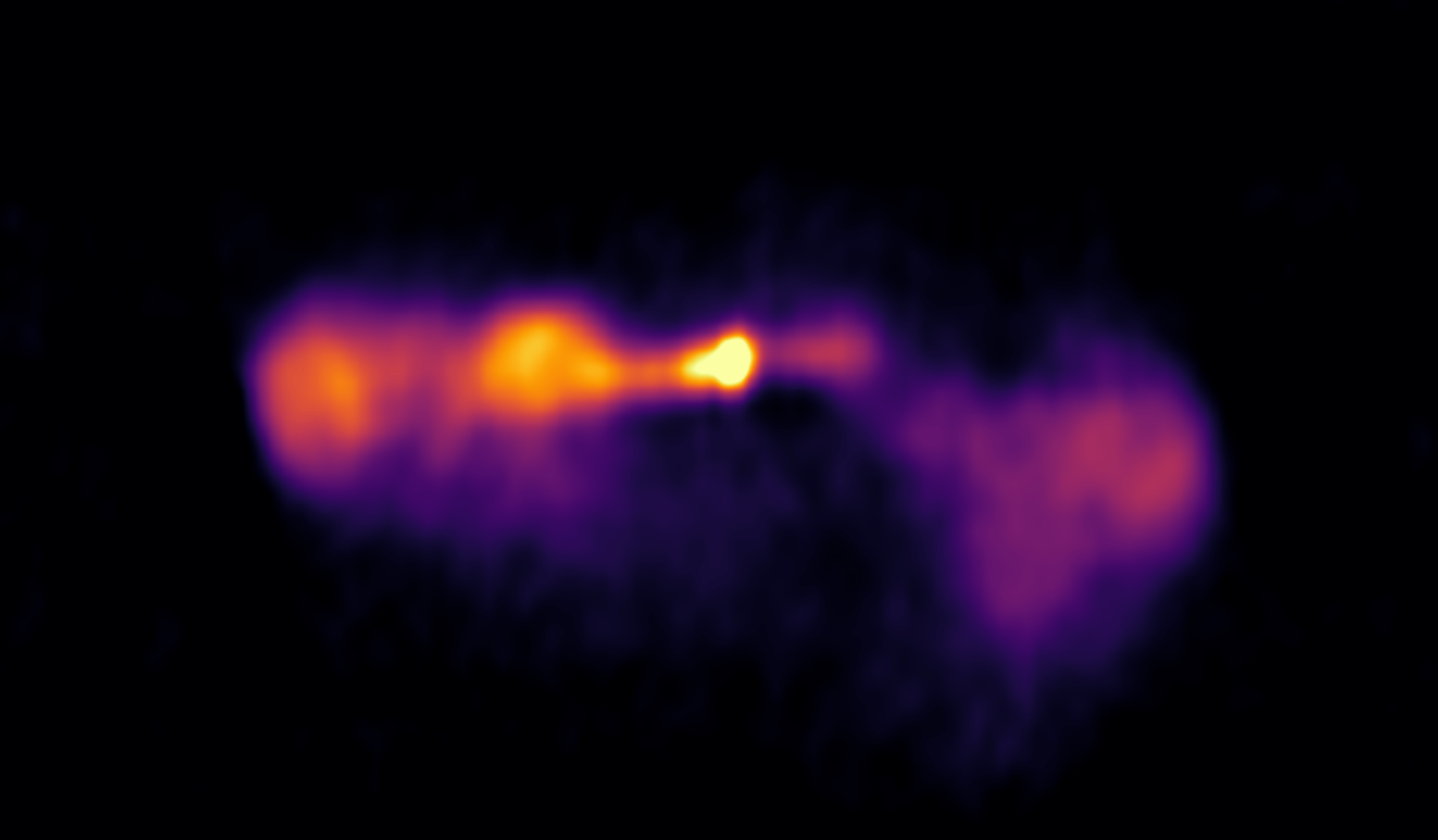
One of the many radio galaxies resolved with the VLA Sky Survey project.
The VLA Sky Survey paper (Lacy et al. 2020) has received the noteworthy achievement that the research is featured in the top one percent of the most cited papers in its subject category. It is also one of the most cited articles from North America, published across the entire IOP Publishing journal portfolio within the past three years (2020 to 2022).
Congratulations to the VLASS team members, the leadership of the Survey Science Group, CIRADA, and the community of users who make the VLASS project possible.
International Symposium on Space Terahertz Technology 2024 - Registration and Call for Abstracts
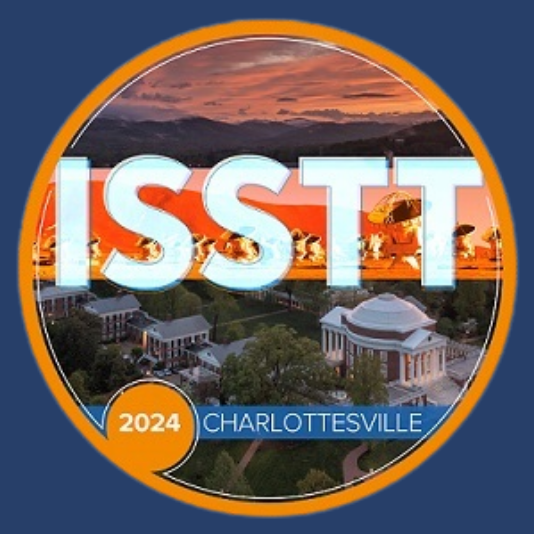
Registration is now open for the 2024 International Symposium on Space Terahertz Technology (ISSTT)! The Symposium will be held in Charlottesville, Virginia USA from April 7th to April 11th, 2024. Registration is available for in-person and virtual participation. Discounted rates, as well as lodging waivers, are available for all eligible students.
This year's Symposium will feature:
- a variety of presentations on current millimeter, submillimeter-wave and Terahertz technologies and applications in astrophysics, planetary science, Earth science and remote sensing.
- a special session on metamaterials.
- the Student Poster Competition in which winners can earn a ten minute oral presentation as well as a cash prize.
- two "Speed Geeking" sessions to help facilitate focus on additional posters in a new, more inclusive, interactive format. (Look for more on that in the New Year!)
Submissions for the ISSTT 2024 meeting will be in the form of one-page abstracts. Student competition entries are encouraged to be two pages. All abstracts should be uploaded by January 14, 2024 as a pdf file on the Symposium website.
Registration is open through March 18, 2024. Attendance is limited. For more information, visit the conference website.
AUI Insider - A Quarterly Newsletter
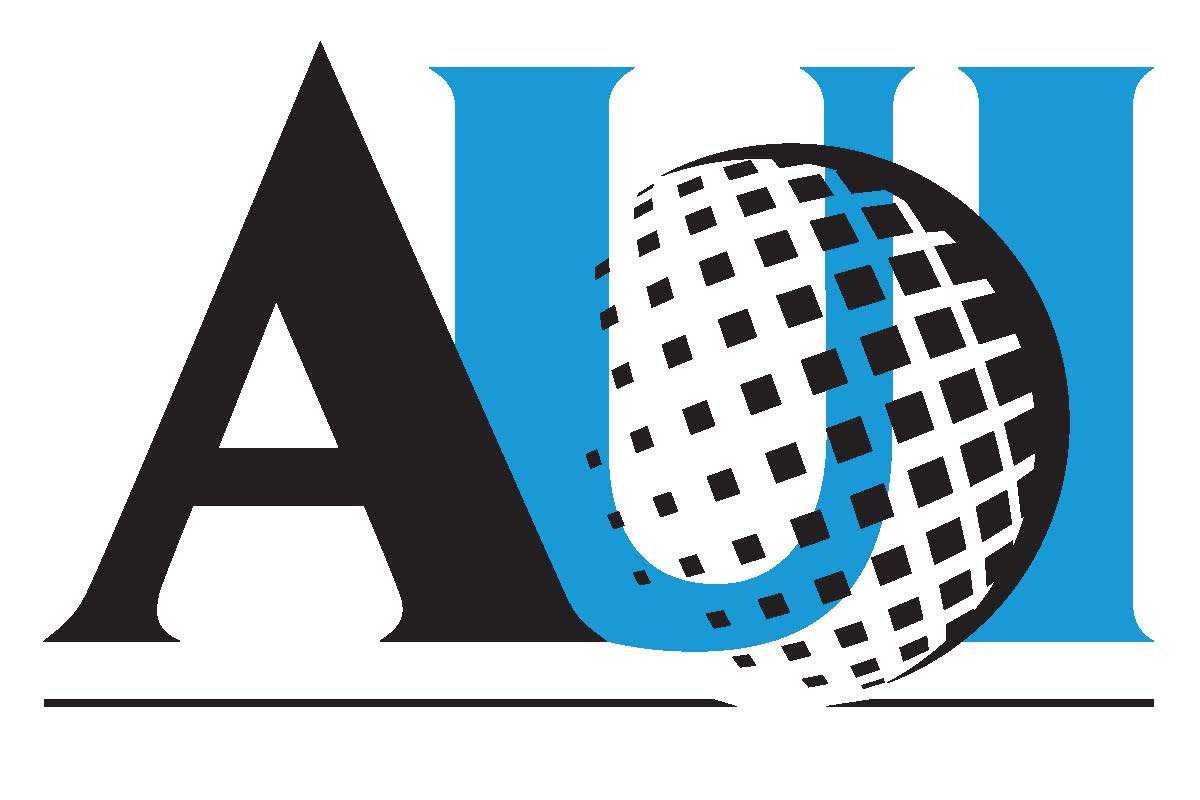
Associated Universities, Inc. invites you to subscribe to AUI Insider, a new quarterly newsletter that will provide regular updates for staff, stakeholders and science enthusiasts alike on what AUI (including at NRAO, GBO, and other future research centers) are doing to make scientific and technological breakthroughs possible. The first issue is now available.
Follow this link to subscribe.
View the 2023 Jansky Lecture online
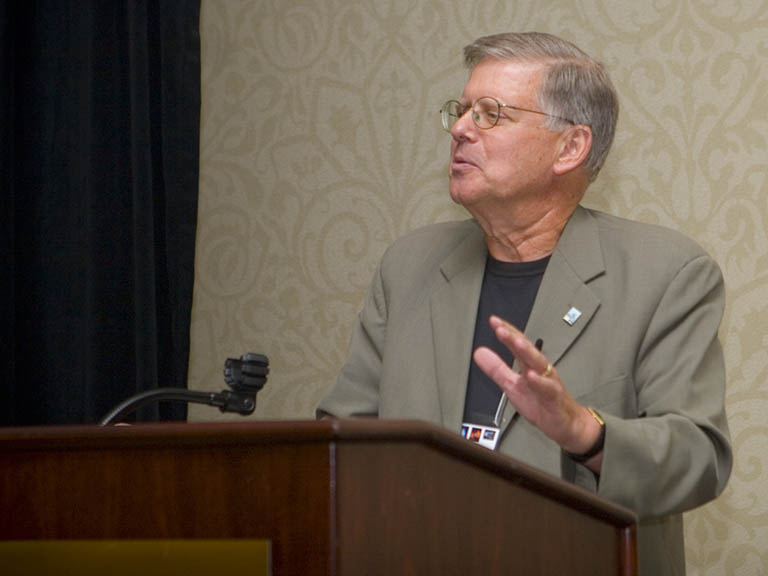
NRAO Archives (NRAO/AUI/NSF)
The NRAO is pleased to award the 2023 Karl G. Jansky Lectureship to Dr. Paul Vanden Bout, Senior Scientist, Emeritus at the National Radio Astronomy Observatory. The Jansky Lectureship is an honor established by the trustees of AUI to recognize and celebrate outstanding contributions to the advancement of radio astronomy.
Dr. Vanden Bout delivered three lectures in Charlottesville, VA, Green Bank, WV, and Socorro, NM - the lecture is available for viewing online.
Recent Science Media Releases
|
ALMA Conference Celebrates 10 Years of Astronomical Discoveries |
|
|
The People Behind the Very Large Array |
|
|
Contact the NRAO press office to share your new and exciting science results. |
From the Archives
Ellen Bouton
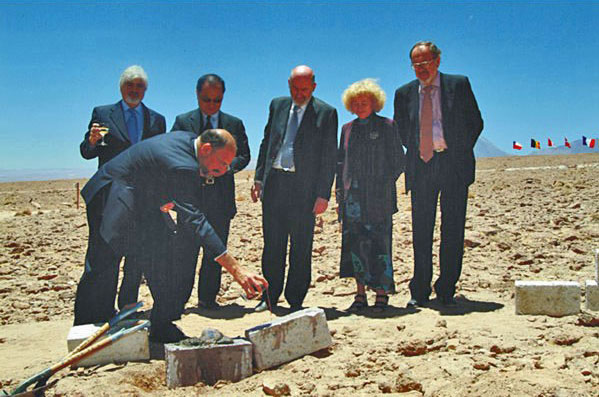
[click to enlarge]
Ineke Dickman
About this month's photo: Groundbreaking at the ALMA Array Operations Center was twenty years ago, on November 6, 2003. In this photo, Bob Dickman (NSF) pours Chilean wine over the stone at the ALMA Operations Support Facility groundbreaking. Left to right behind him: Eduardo Hardy (AUI), Fred Lo (NRAO Director), Massimo Tarenghi (ESO), Catherine Cesarsky (ESO Director General), and Daniel Hofstadt (ESO). The ALMA inauguration, after nearly three decades of planning, engineering and construction, was almost 10 years later, on March 13, 2013. A conference, ALMA at 10 years: Past, Present, and Future, held 4-8 December 2023, commemorated another ALMA milestone.
From the Archives is an ongoing series illustrating NRAO and U.S. radio astronomy history via images selected from our collections of individuals' and institutional papers. If readers have images they believe would be of interest to the Archives, please contact Ellen Bouton.

